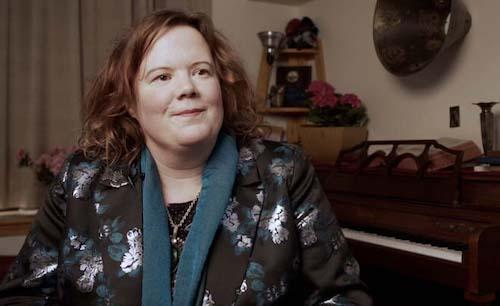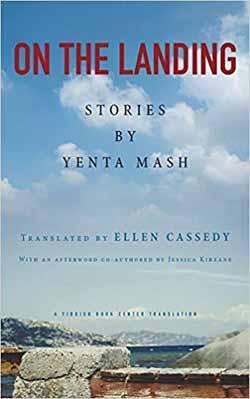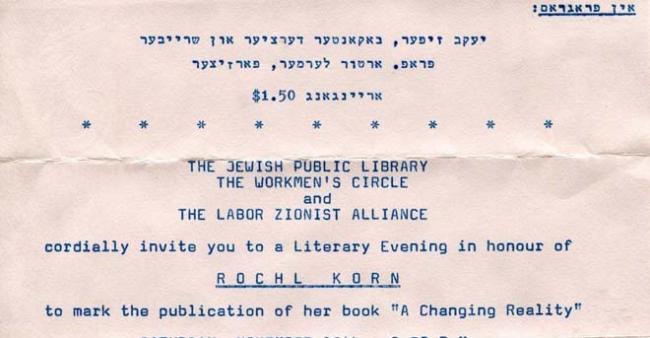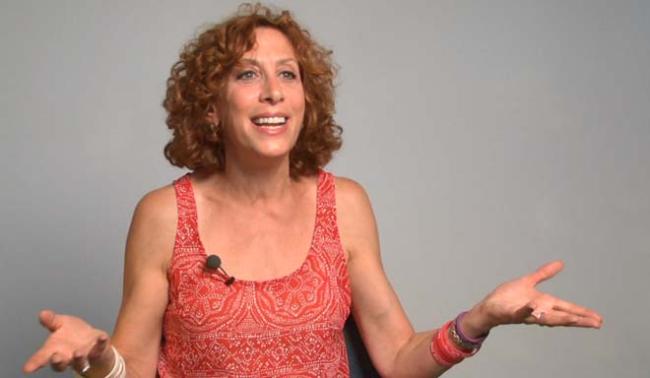Weekly Reader: Does Yiddish pass the Bechdel test?
July 3, 2022
In 1985 cartoonist Alison Bechdel introduced a simple criterion that would soon become known as the Bechdel Test. In any given work of fiction, do the women characters talk amongst themselves about something other than a man? Although the Bechdel Test refers to works of fiction specifically, we might also apply it more broadly. And, to generalize very broadly, how well does Yiddish pass the Bechdel test? Surprisingly well, it turns out. In the recent history of Yiddish there is no shortage of amazingly fruitful artistic relationships between women, where men have nothing to do with it. Here are a few of those we found most illuminating.
—Ezra Glinter
Finding a Mentor

Mentorship across generations has always been a cornerstone of creative life, and Yiddish is no exception. In this oral history interview Caraid O’Brien—a writer, performer, and director, including of Yiddish works—explains how she became friends with the Yiddish actor Luba Kadison when Caraid was just starting to build an artistic career in her twenties and Luba was at the end of a rich artistic life.
Watch an interview with Caraid O’Brien
A Connection To You

There are few more celebrated—and different—recent Yiddish writers than Chava Rosenfarb and Blume Lempel. While Rosenfarb is best known for her monumental three-volume Holocaust novel The Tree of Life, Lempel preferred to work in shorter forms, writing short fiction that is often highly experimental. Despite their differences, the two writers had a close relationship, carried out over years by post. Translated here for the first time, these letters offer a rare glimpse into the private worlds of these towering literary figures and illustrate the profoundly sustaining power of correspondence.
Read a selection of the Rosenfarb-Lempel correspondence
Chronicler of Exile

In a collection of stories newly translated from the Yiddish by Ellen Cassedy, prize-winning author Yenta Mash traces an arc across continents, upheavals and regime changes, and the phases of a woman’s life, from girlhood to old age. In this podcast episode Cassedy speaks about this master chronicler of exile, whose work brings much to the literature of immigration and resilience.
Listen to an interview with Ellen Cassedy
Destined to Create

In 1977, after attaining fame and admiration as a “poet of the Jewish people,” Rokhl Korn marked the publication of her book Farbitene vor (A Changing Reality) at Montreal’s Jewish Public Library by speaking about youth and creative birth. What produced the poetic impulse in her as a child, and what gives rise to a poet in any era? Here she hazards answers, with her decades of struggle evident in her worn but powerful voice. To translator Mikhl Yanshinsky she sounds like an aged blues singer who ambles up to the microphone not to praise herself for years of accomplishment but to conjure up the uncertainty and unknowns of life once upon a time.
Read a translation of Korn’s speech
Three Divas

There are few stronger—and sometimes contentious—relationships than those between a group of touring artists. Joanne Borts—Broadway singer and Yiddish activist—recalls the strong relationships she had with Adrienne Cooper, Marilyn Lerner, and Theresa Tova, members of her traveling Yiddish singing group.
